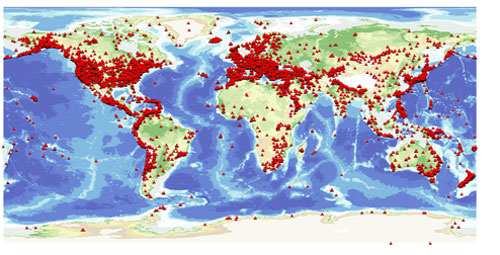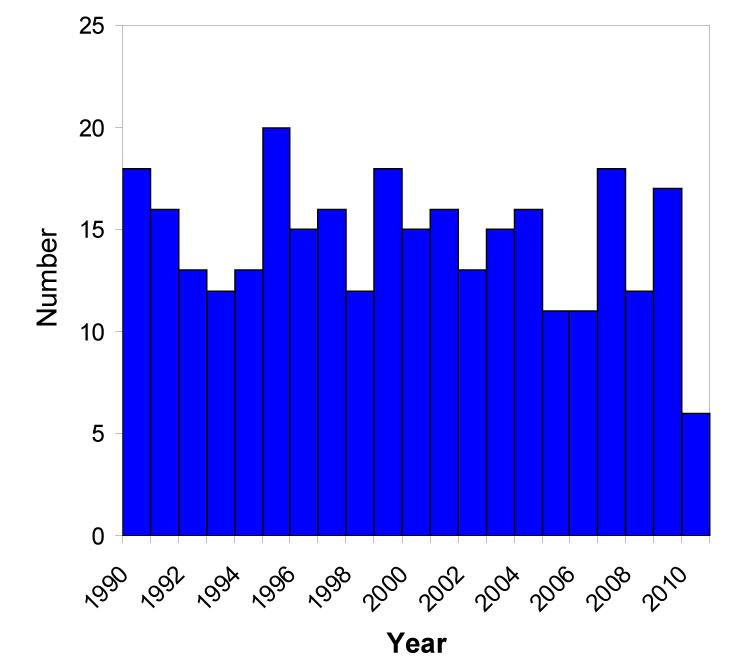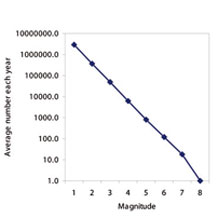Is earthquake activity increasing? | April 2010
Recent devastating earthquakes in Haiti, Chile and China, as well as magnitude 7+ earthquakes in Indonesia and California, might give the impression that earthquake activity is increasing.
In fact, a quick look at earthquake statistics over the last 20 years shows that this is not the case.
On average there are about 15 earthquakes every year with a magnitude of 7 or greater.
As with any almost random phenomena, the number of earthquakes each year varies slightly from this average, but in general, there are no dramatic variations.
So far this year, there have been six magnitude 7+ earthquakes, in keeping with the annual rate.
Energy budget
Earthquake activity is controlled by the motion of the Earth's tectonic plates, driven by heat generation from the decay of radioactive elements deep inside our planet. Thermodynamics requires that for more energy to come out of a system, more energy has to go in.
A long term increase in earthquake activity would require an increase in the Earth's internal energy supply, which would be difficult to account for.
Detection
It is true that our ability to detect and measure earthquakes has improved over the last few decades due to huge increases in the number of seismograph stations that record earthquakes. However, this mainly affects our ability to detect smaller earthquakes.
Larger earthquakes occur less frequently than smaller ones. This relationship is exponential, i.e. there are ten times as many magnitude 6 or larger earthquakes in a given time period than magnitude 7 or larger earthquakes.

Why it might seem that there are more earthquakes
- Earthquakes in populated areas are far more apparent than the many that occur in remote regions. So when, by chance, a run of earthquakes hit population centres it appears that the number of events has increased. Also, there are more people at risk. Population increases mean there are more people than ever in earthquake prone regions. So although the number of earthquakes remains the same the impact increases.
- Earthquake clustering — Although long-term averages are fairly constant, in any quasi-random process, you get clustering in time. Increases and decreases in seismicity rates are a natural part of this. People notice the clusters; they don't notice the gaps in-between. They also forget the previous cluster!
- Global communication — Vast improvements in global communications mean we have near instant pictures of devastating earthquakes from all around the world. This means more people are aware of earthquakes and their impact.
Further information
Contact Brian Baptie for further information.

- A Comparison of the Folkestone and Market Rasen Earthquakes
- Revised Seismic Hazard Maps for the UK
- Seismogenesis and State of Stress in the UK
- Monitoring Volcanic Eruptions Using Interferometry
- Particular events
- Are yesterday's earthquakes tomorrow's disasters?
- Creating 'virtual seismometers' deep inside the Earth
- Fault line living
- Is earthquake activity related to the Moon or Sun?
- Is earthquake activity increasing?



